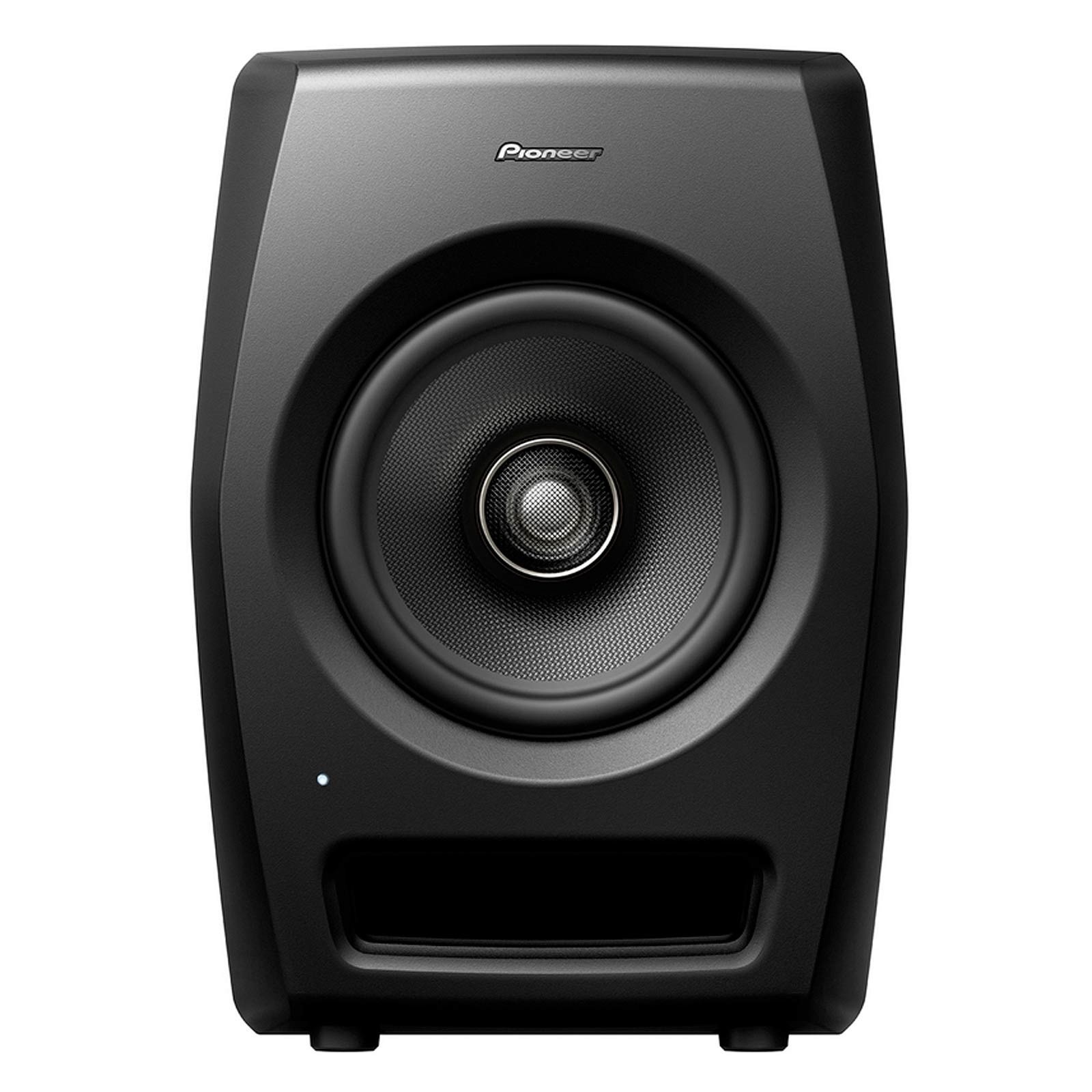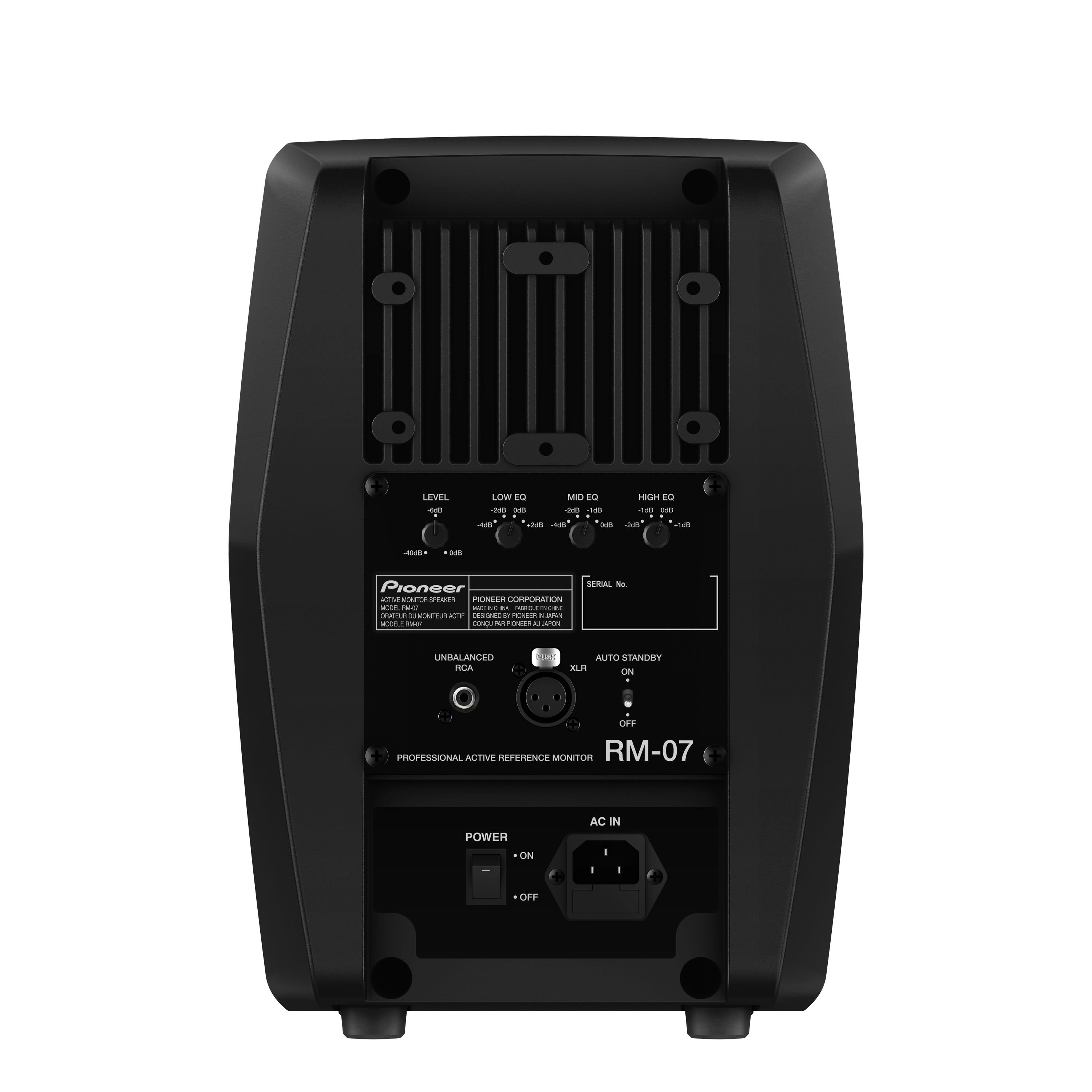Review: Pioneer RM-07 Active Reference Monitors
XLR8R tests out the latest offering from Pioneer's RM series.

Pioneer certainly has a rich history in speaker design. Ranging from their hi-fi stereo speakers to their more recent DJ-centric studio monitors, the Japanese corporation has developed a vast amount of proprietary speaker technology over the years. Their latest RM series incorporates a number of these patented designs, and represents their first foray into the world of active reference monitors for the professional studio.
The design
The RM-07 comes equipped with a 6.5″ Aramid fiber woofer and a 1.5″ tweeter, both placed in a single coaxial driver unit and adopted directly from Pioneer’s sub-brand, TAD. Whereas most traditional monitors have separate drivers for the woofer and tweeter, the RM-07 keeps both on the same axis—a design decision intended to ensure clarity across the entire frequency spectrum. The tweeter is based on Pioneer’s HSDOM technology and can reach up to 50kHz, which is considerably higher than the ~20kHz that most of us can actually perceive.
With a rigid die-cast aluminum cabinet, the build quality is superb. The RM-07s are reasonably heavy too, which helps reduces any unwanted resonances from the cabinet itself. The front of the monitor is also contoured to reduce diffraction, and the front-load bass-reflex port is intended to produce and a clean and clear low end. Pioneer has also included their AFAST technology to reduce standing waves, which can create a lot of mud in the low-mid frequency range. The back of the monitor has audio inputs for both XLR and RCA—a nice touch for DJs and producers—along with a switch for auto standby that can engage after 25 minutes of standby, three EQ knobs, and an overall level knob.
Regarding the EQ and level controls, there are a few things to be aware of. First, the EQ is broken down into three bands: low, mid, and high. Oddly, the “mid” control creates a frequency dip at ~140Hz, which is a little confusing in terms of labeling. Nonetheless, it makes sense that Pioneer has a control for this specific low range, because it can cause several problems in a home-studio environment. Secondly, it would have been great to include a notch on the level knob. This would help ensure that both monitors are outputting at the same level—with the current design, it can be challenging to find that necessary balance.
The sound

The monitors were tested with an Apogee Ensemble interface in an acoustically treated studio environment. A variety of genres were included in the testing process as well—all at low, normal, and loud amplitude levels.
Firstly, it’s important to note that the RM-07s can be surprisingly loud, so you must make sure to be aware of the levels. On reflection, the monitors seem to really shine with more modern electronic tracks. The bass extension is impressive considering the size of the woofer, and the low-mid frequency range is represented well, too. In contrast, the mids felt slightly less upfront in terms of the overall frequency spectrum, and the highs felt a little too aggressive, especially at higher volumes. Thankfully, the high EQ control can be used to tame this a bit.
In terms of imaging, the RM-07s hold up well. Different frequency ranges could be discerned with relative ease, and the stereo separation is transparent, for the most part. However, in comparison to a few other monitors within a similar price range—or slightly above it—the overall depth and separation across the frequency range was much less clear and precise.
In terms of amplitude levels, the RM-07s definitely have a pretty big sweet-spot—tracks at low levels retained most of the imaging, and they sounded great at normal listening levels. As mentioned earlier, these monitors can get loud, but there it a noticeable loss of clarity at these higher levels.
Overall, the sound could be defined as aggressive and punchy, as opposed to clinical and crystal clear. They are reference monitors, but with a little attitude thrown in.
Conclusion
Many reference monitors for professionals claim to have a flat frequency response—but in reality, though most are flat, they retain their own character. It remains important to discover what works best for you over long listening periods, and to really learn the character of your monitors so you know exactly what frequency range should sit in the mix, thus maximizing transparency across different speakers. After all, this is the whole point of using monitors in the first place, right?
Overall, the RM-07s look great, are built to a high standard, and definitely have an impressive bass response. They certainly lack the clarity and depth of some competitors in this price range—but if aggressive and punchy is your thing, the RM07s are definitely worth checking out.

